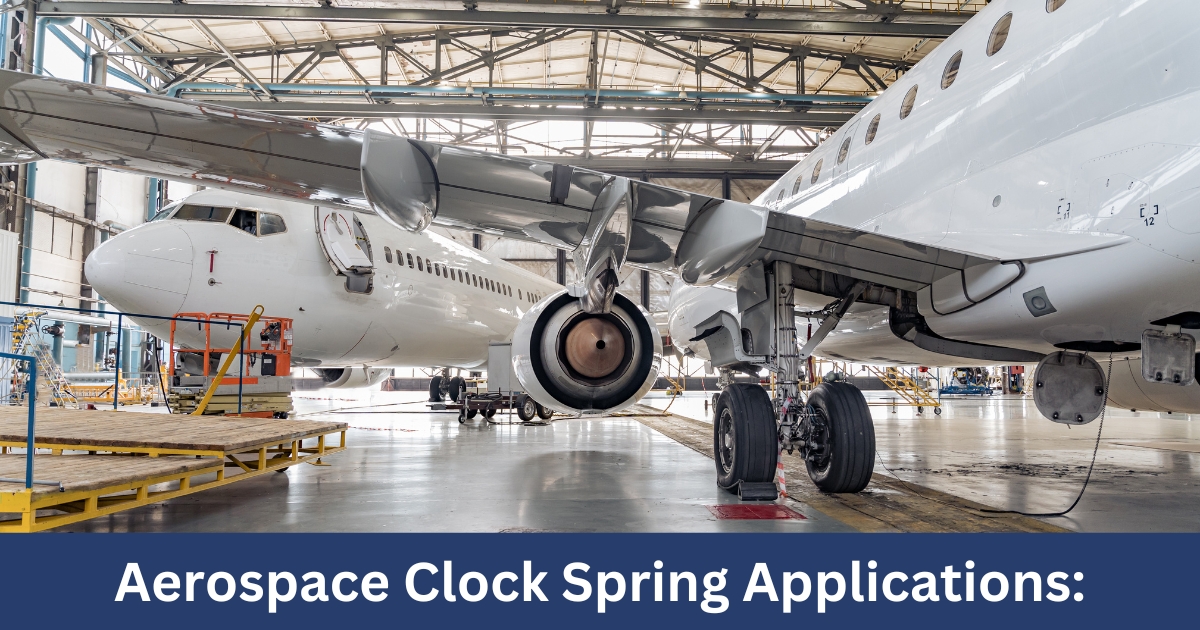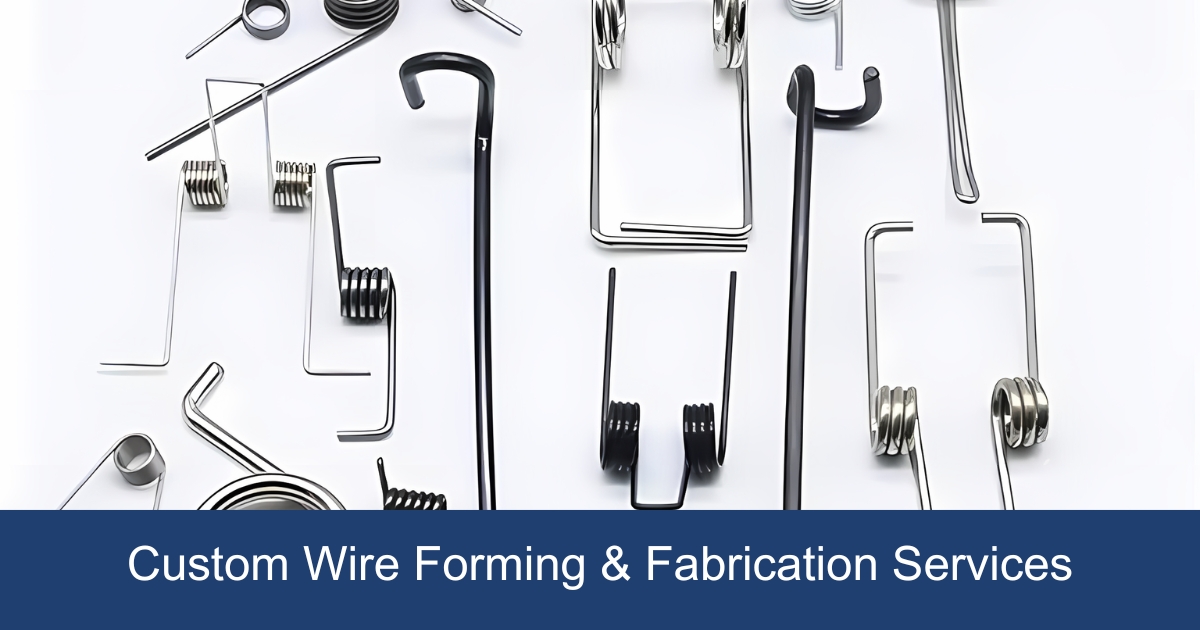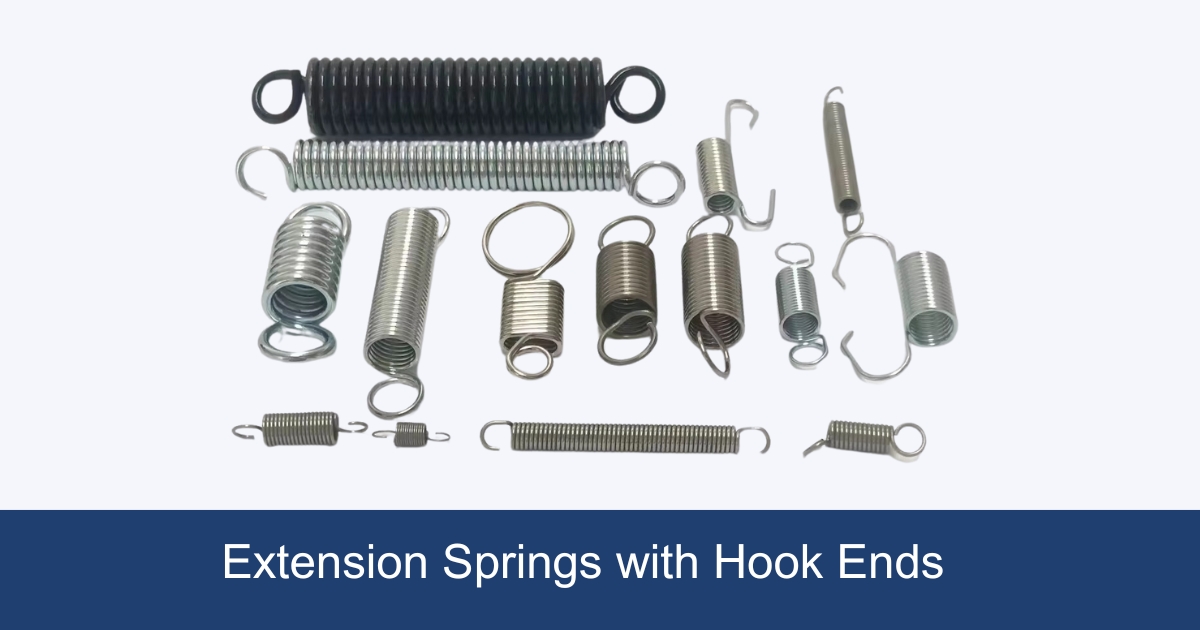Double torsion springs are vital components in industrial mechanisms, functioning by twisting to store mechanical energy. Unlike single torsion springs, which twist in one direction, double torsion springs use two opposing coil sets to handle greater loads and deliver complex torque. They’re crucial in industries like automotive, aerospace, and manufacturing, enhancing the performance of hinges, levers, and pivotal machine parts. Understanding their specifications and implications aids stakeholders in choosing high-grade double torsion springs for precise mechanical needs.
Double torsion springs, essential in various mechanical applications, are produced under strict industry standards to ensure top-quality performance. These standards require manufacturers to deliver reliable and efficient products that surpass competitors. Compliance reflects a dedication to excellence, ensuring safety and consistency across industries. By meeting these standards, companies maintain high quality and reliability.
Material Quality and Durability:
Industry standards guide the material selection for double torsion springs, mandating high-grade options like stainless steel for strength, flexibility, and durability. Durability tests confirm performance under repeated use and environmental stresses, ensuring long-term integrity. Precision manufacturing, involving coiling, heat treatment, and finishing, is essential for quality.
Comprehensive inspection protocols enforce quality checks throughout production, covering dimensional accuracy, material composition, and performance under simulated conditions.
Safety and Performance:
Safety standards are crucial for double torsion springs, especially in critical applications like automotive, aerospace, and medical devices. These standards ensure the springs operate safely under expected loads, preventing accidents or equipment damage. Performance standards define the springs’ lifespan, torque capacities, and behavior under load, providing engineers with confidence in their reliability.
Compliance with these standards enables manufacturers to deliver springs that are safe, durable, and efficient, showcasing their commitment to quality—an essential factor in choosing a supplier.
Lead Times for Custom Double Torsion Springs
Timely delivery is crucial in selecting a double torsion spring company. Aligning the production timeline with your project deadlines ensures seamless project execution. A tempting offer from a supplier with significantly lower prices but longer lead times can jeopardize your schedule, highlighting the importance of choosing a partner who values punctuality as much as you do.
An ideal manufacturer provides transparent and realistic lead times, understanding that delays can ripple through your business, affecting project timelines and client satisfaction. Advanced manufacturing techniques, such as automation, play a pivotal role in enhancing production efficiency, allowing for more predictable and accurate delivery schedules.
The timeframe for receiving your order can vary based on several factors, including the quantity of springs, customization level, material availability, and the manufacturer’s current workload. Zigoal provides a range of materials and finishes with lead times typically ranging from 2 to 4 weeks, offering flexibility for various project timelines.
Cost Considerations
Understanding the cost considerations when selecting a double torsion spring manufacturer involves several key components that directly impact the overall expense. Here’s a structured breakdown to navigate through the cost intricacies efficiently:
Material and Manufacturing Complexity:
Material Type and Usage: The cost is significantly influenced by the type of material selected (e.g., stainless steel vs. special alloys) and the amount of material used. Higher-grade materials and larger quantities inherently drive up costs.
Manufacturing Difficulty: Complex designs requiring precise engineering and specialized manufacturing processes can increase the price due to the higher level of technical expertise and labor involved.
By considering these factors, individuals and businesses can better anticipate the financial implications of their double torsion spring needs. Whether it’s a straightforward replacement or a custom-engineered solution, being informed about the variables affecting cost ensures more effective budgeting and decision-making.
Quality and Reliability at A Custom Double Torsion Spring Manufacturer
Choosing a reputable double torsion spring manufacturer is essential for ensuring the quality and reliability of springs, directly affecting their application’s performance and longevity. Key design aspects like wire diameter, outer diameter, and leg length significantly influence a spring’s durability, flexibility, and torque capacity. For example, a thicker wire diameter enhances strength, ensuring a longer lifespan and reducing maintenance needs. Larger outer diameters allow the springs to handle more torque, decreasing failure risks. Additionally, the choice of materials, such as stainless steel or special alloys, offers benefits like superior corrosion resistance and durability, crucial for springs exposed to harsh environments.
Compliance with international quality standards and thorough testing protocols are paramount. These practices ensure springs meet rigorous quality and reliability criteria, identifying any potential flaws before application integration. High-quality materials and strict adherence to standards result in springs that withstand demanding conditions, maintaining performance over time. By focusing on these critical factors, manufacturers can produce double torsion springs that not only meet but exceed application requirements, ensuring efficient, durable, and reliable outcomes for various mechanical needs. This strategic approach to manufacturing allows for the development of springs that play a pivotal role in the success and operational longevity of their applications.
Assessing Customer Service and Support
Zigoal Springs stands out in the realm of customer service and support, thanks to its in-house Design & Innovation Team. This dedicated team plays a pivotal role in the success of projects by engaging directly with customers to understand their specific needs and challenges. Here’s how this approach benefits the customer:
Customers have the opportunity to work closely with the Design & Innovation Team.
This direct line of communication ensures that the project’s requirements are clearly understood and met with precision.
Customized Solutions:
The team’s involvement allows for the development of tailored solutions that precisely match the project’s specifications.
This bespoke approach ensures that the double torsion springs are optimized for their intended application, enhancing performance and reliability.
Streamlined Process:
By involving the Design & Innovation Team early in the project, potential issues can be identified and addressed promptly, reducing delays.
This proactive approach to project management ensures a smoother, more efficient process from concept to completion.
Applications of Double Torsion Springs in Manufacturing
Double torsion springs offer versatility, with capabilities extending to various high-demand industrial applications. These springs deliver bidirectional forces, making them integral components in a multitude of manufacturing ecosystems. Their design allows them to exert torque in two directions, which translates to higher efficiency and functionality in machinery that requires such dual action.
High-Performance Applications Requiring Bi-Directional Forces
When equipment needs to perform complex mechanical movements, double torsion springs are frequently the solution. These springs tackle counterbalancing, retracting, and returning jobs with ease. Their equal but opposite torque characteristics make them suitable for applications where consistent force is paramount for both rotations and counter rotations.
Custom Applications in Manufacturing Settings
Diverse manufacturing demands call for custom-engineered spring solutions. Double torsion springs can be tailored to unique specifications, addressing special load requirements and environmental factors. The customization aspect ensures a perfect fit for the application in question and enhances the overall reliability of the machinery they are incorporated into.
Examples of Industrial Machinery Utilizing Double Torsion Springs
- Automotive components: From clutches to door mechanisms, double torsion springs play a critical role in the safety and functionality of automotive parts.
- Consumer electronics: These springs are key in the articulation of moveable components, like those found in laptop hinges and camera tripods.
- Industrial machinery: Heavy-duty double torsion springs facilitate movements in presses, robotic arms, and other high-precision equipment in the manufacturing sector.
By understanding the extensive involvement double torsion springs have in manufacturing, stakeholders and engineers can harness their full potential to optimize machinery performance. Advanced industrial sectors benefit significantly from the specialized capabilities that these springs provide.
Custom Double Torsion Springs for Industrial Use
Every industry has unique demands, and double torsion springs are no exception. The precision with which these springs are crafted can influence the functionality of entire systems. Recognizing this, manufacturers offer custom double torsion springs designed specifically to meet the exact requirements of their applications.
Understanding Customization in Spring Manufacturing
Customization in spring manufacturing means more than choosing a size or material; it involves a detailed process to create springs that fulfill specific operational criteria. Manufacturers willing to collaborate closely with clients ensure that each custom spring is a perfect fit for its intended use.
Tailoring to Application Requirements: Diameter, Design, and Wire Considerations
Various factors are critical when creating a custom spring, including wire diameter, overall design, and spring diameter. Engineers work meticulously to modify these parameters, ensuring the springs perform reliably under the complex stresses they will encounter. For instance, a larger wire diameter might be used to increase the load capacity of a spring for heavy-duty machinery. Similarly, the design may be altered to allow for the dual application of torques or to fit into restricted spaces.
The Importance of Custom Design for Efficiency and Longevity
- A spring tailored to the application can reduce machinery wear, contributing to a lower maintenance schedule.
- Efficiency is significantly enhanced as each spring can be designed to store and release energy in the most optimal way for the specific machine or operation.
- Longevity of springs directly corresponds to the suitability of their design for the task at hand; springs that are well-suited to their application will endure fewer cycles of stress, potentially increasing their operational lifespan.
Material Selection for Double Torsion Springs
Understanding the materials used in double torsion springs guides manufacturers in producing components that meet specific industrial requirements. These springs are crafted from a variety of metals, tailored to withstand diverse operational stresses and environmental conditions.
Common Materials Used in Double Torsion Springs
Double torsion springs are fashioned from numerous metal types. Stainless steel stands as a popular choice due to its corrosion resistance and strength. Music wire, a high-carbon steel wire, is renowned for its high tensile strength and is frequently selected for springs requiring tight tolerances and robustness. For applications demanding resistance to corrosion and non-magnetic properties, phosphor bronze is an ideal candidate. Hard-drawn wire is another prevalent option, acknowledged for its cost-effectiveness and durability.
Factors Impacting Material Choice: Environment, Stress, and Application
The environment where the spring operates dictates material selection. Corrosive environments necessitate materials like stainless steel or Inconel, which can endure such conditions. The stress the spring will encounter is also a determining factor. Materials like music wire can withstand high loads, essential for springs subjected to significant stress. The application of the spring further influences material choice; for instance, beryllium copper is selected for electrical conductivity in electrical applications.
Pros and Cons of Various Materials in Different Industrial Settings
- Stainless Steel: Exhibits excellent corrosion resistance and has a high strength-to-weight ratio, suited to aerospace and medical industries. However, stainless steel can be costlier and harder to work with than other metals.
- Music Wire: Delivers exceptional tensile strength and fatigue life, suitable for high-stress applications. Its major limitation is poor corrosion resistance, limiting its use in harsh environments without additional coating.
- Phosphor Bronze: Offers good electrical conductivity and fatigue resistance, ideal for electronic and marine applications. Its downside is lower tensile strength compared to steel.
- Hard-Drawn Wire: Provides a cost-effective solution with good tensile strength. Contrarily, it may lack the refined properties of more specialized materials, making it unsuitable for precision applications.
The Manufacturing Process of Double Torsion Springs
Double torsion springs, designed to exert torque in opposite directions from two points with common center, undergo a meticulous manufacturing process. The precision of this process directly affects the spring’s performance in various applications. Recognizing the steps and the technology used shines a light on the technical craftsmanship behind these components.
Step-by-Step Breakdown of the Manufacturing Process
- Selecting an appropriate wire diameter and material is the starting point, based on the spring’s intended use and environmental factors.
- The wire is then fed into a torsion spring coiling machine. Via a series of mandrels and cams, the wire is coiled to the precise diameter required.
- Once coiled, the spring’s legs are bent to their specifications. This is a critical phase, as the legs’ angle and length determine the spring’s functionality.
- Heat treatment follows, where springs are subjected to high temperatures, enhancing their strength and longevity.
- Additional processes like shot-peening or stress-relieving may be applied, augmenting fatigue life.
- Finished springs are then cooled and moved to the inspection phase to ensure compliance with the required specifications.
Machinery and Technology Involved in Spring Production
Advanced equipment shapes the backbone of double torsion spring manufacturing. CNC coilers and formers offer high precision in controlling dimensions and angles, while automated load testers ensure each spring meets the necessary force requirements.
Addressing the Role of Precision and Accuracy in Manufacturing
Accuracy in the double torsion spring manufacturing process can make the difference between a high-performing spring and one that fails prematurely. Tolerances often fall within thousandths of an inch, and consistent monitoring throughout the process guarantees these standards are met. For this reason, manufacturers integrate cutting-edge measuring devices and quality control systems at every production stage.
Insights into Double Torsion Spring Design Considerations
Transforming the operating demands of an application into precise design specifications lays the groundwork for functional double torsion springs. Engineers and designers collaboratively determine the appropriate dimensions, load requirements, and torsional forces that the springs must support. As the design takes shape, attention to detail ensures that each spring will operate as intended within its mechanical system.
The selection of wire size and material is not just a matter of fitting into a given space. Designers must find the balance between strength and flexibility, environmental resistance, and cost efficiency. Factors such as operating temperature, potential for corrosive elements, and the intended frequency of use dictate the optimal choice of wire composition and diameter for each unique double torsion spring application.
Incorporating engineering principles in spring design is non-negotiable for achieving peak performance. Accounting for the stress distribution and potential for fatigue in the coiling ensures longevity and reliability. This encompasses calculating the precise angle of the legs to the coils and ensuring the spring can withstand the planned number of cycles.
Focusing on Design Specificity for Functionality
Designing double torsion springs for specific functions requires precise choices in wire size and materials. High-grade stainless steel may be essential for medical devices, while hard-drawn wire works for less demanding applications. Understanding material strengths, temperature tolerances, and finishes allows for tailoring properties to each function.
Mathematical accuracy in setting leg configurations, coil diameters, and wire lengths ensures that springs deliver required torque without early failure. For instance, heavier wire gauges increase load capacity but add stress to spring legs, requiring careful calculations. Creativity also plays a role, inspiring innovative configurations and new materials to meet complex requirements and advance spring capabilities.
Integrating Performance with Longevity
Optimizing both performance and longevity in double torsion springs goes beyond initial design. Strategic placement of stress points and finishing processes like shot peening or plating enhance endurance and wear resistance.
Regular testing and iterative redesign, informed by real-world feedback, further refine spring geometry for improved efficiency. Achieving excellence in spring design involves a careful balance of engineering, physics, and material science, creating products that meet application needs while exceeding expected lifespans. Each spring reflects the meticulous attention given to its design and functionality.
Life Cycle and Durability of Double Torsion Springs
Different factors coalesce to influence the life cycle of double torsion springs. The wire size, coil diameter, material type, and surface finish all affect longevity. A spring may thrive under one set of conditions yet falter in another. For instance, springs crafted from music wire exhibit excellent tensile strength but may corrode without proper surface treatments, whereas stainless steel variants resist corrosion but might carry lower maximum loads.
Maintenance plays a pivotal role in extending the operational life of a double torsion spring. Periodic inspections for signs of stress or degradation, coupled with timely lubrication, can avert premature failures. Operational scenarios with high cyclic loads necessitate rigorous maintenance schedules. Should a spring exhibit the onset of fatigue or wear, immediate attention facilitates uninterrupted performance and mitigates the risk of sudden failure.
Despite diligent maintenance, springs inevitably reach a point where their functional limit is surpassed and replacement becomes a necessity. Frequent monitoring detects early signs of decline, prompting the timely procurement of replacements before a failure occurs. Replacing springs as part of a preventative maintenance plan or following a measured period of use ensures machinery operates with optimal reliability and efficiency.
Manufacturers and engineers alike recognize the need for retaining spare springs in inventory. This strategic approach to component management ensures continuity in operations, particularly within high-throughput industrial environments. Having replacements at hand mitigates downtime, allowing machines to return to full productivity with minimal delays following spring replacements.
- Wire composition and diameter influence spring durability.
- Coil dimensions and material dictate the effective life span of a spring.
- Regular maintenance—including inspections and lubrication—prolongs spring usability.
- Proactive replacement strategies prevent operational disruptions.
Quality Control in Double Torsion Spring Manufacturing
Manufacturers of double torsion springs establish stringent quality control measures to sustain trust with clientele by delivering dependable, high-performance components. Each detailed aspect of the spring’s design, from material integrity to precise dimensions, undergoes a rigorous examination. By adhering to testing protocols, the likelihood of spring failure markedly decreases, providing assurances of the spring’s integrity throughout its intended lifecycle.
Establishing Stringent Quality Control Measures
Double torsion spring manufacturers incorporate a variety of quality control processes to ensure product conformity. Production stages are monitored scrupulously, emphasizing defect prevention over retrospective detection and correction. Such attention to detail has systematic benefits, creating pathways for continuous improvement in manufacturing practices.
Testing Protocols to Ensure Spring Integrity
Multifaceted testing protocols are integral to the quality assurance paradigm in double torsion spring manufacturing. Dynamic testing evaluates spring functionality under variable load conditions, while dimensional analysis verifies compliance with specified geometric tolerances. Metallurgical inspections provide insights into the material makeup, authenticating the spring’s structural integrity. These protocols contribute to the delivery of springs that fully meet operational expectations.
Certifications and Standards in Quality Assurance
Quality assurance for double torsion springs aligns with internationally recognized certifications and standards. Such certifications, including ISO 9001 for quality management systems, demonstrate a manufacturer’s commitment to product excellence and process efficiency. Compliance with ASTM and DIN standards, among others, ensures global acceptability and reliability of the manufactured springs. By adhering to these benchmarks, manufacturers pledge a uniform threshold of quality, quelling concerns regarding differential quality norms.
Innovations in Double Torsion Spring Production
The landscape of double torsion spring manufacturing continuously evolves, heightened by advancements in technology that reshape efficiency and product quality. Manufacturers who embrace these innovations maintain competitive edges, delivering refined products that meet the escalating demands of industries reliant on precise mechanical components.
Recent Technological Advancements in Spring Manufacturing
Recent years have seen quantum leaps in spring production mechanisms. Computer-aided design (CAD) systems now allow for seamless transition from drawing board to prototype. Automation and robotics have been integrated into the manufacturing floor, allowing for more consistent and high-fidelity springs. With the advent of laser and water jet cutting techniques, springs can now be produced with tighter tolerances and less material waste. Additionally, the use of high-tech materials such as Inconel, elgiloy, and MP35N alloys has expanded the boundaries of durability and environmental resistance of double torsion springs.
How Innovation Enhances Quality and Efficiency
- Incorporation of 3D printing technologies paves the way for rapid prototyping, reducing the time from design to production.
- Advancements in metallurgical processes enhance the tensile strength of materials, ensuring the springs withstand more cycles and environment-induced stress.
- Computerized numerical control (CNC) machines produce intricacies in spring design that once would have been deemed impractical or impossible to manufacture.
- Real-time quality control systems use laser scanners and imaging technology to detect even the slightest deviations from predetermined specifications, guaranteeing consistency in each batch.
Future Trends in Spring Production
Looking ahead, the influence of nanotechnology promises to revolutionize materials at the molecular level, offering unprecedented strength-to-weight ratios. Artificial intelligence (AI) and machine learning algorithms are set to further automate decision-making in manufacturing processes, potentially minimizing human error and shortening the time required for design optimization. The industry anticipates a growing use of environmentally sustainable materials and methods, reducing the carbon footprint of spring production. Networking through the Internet of Things (IoT) will likely see springs becoming more interactive within their applications, possibly relaying real-time data on their stress levels and operational status.
As the manufacturing sector leans into the future, double torsion spring manufacturers who invest in innovative technologies and practices position themselves at the forefront of the industry, catering to a burgeoning market that values precision, resilience, and intelligent design.
Selecting the Ideal Double Torsion Spring Manufacturer
Decisions about manufacturing partnerships can directly affect product quality and operational efficiency. Acknowledging the specific expertise required in double torsion spring production, companies must scrutinize several criteria before engaging with a manufacturer. Precision in crafting these components ensures performance under the demands of industrial use, where springs must endure cycles of deflection and rotation. A foundational step involves reviewing manufacturer credentials against the backdrop of complex needs.
Criteria for Selecting a Top-Quality Manufacturer
The spine of any successful collaboration rests on transparency and communication. These facilitate a discerning process in manufacturer selection. Factors include technological capability, scalability, and compliance with regulations. Companies must ensure that their selected partner employs advanced machinery and techniques. Also, responsiveness to expanding order volumes signifies a robust operation capable of growth alignment.
Importance of Expertise and Experience in Custom Spring Production
Expertise manifests through years of service excellence, refinement of skills, and deep understanding of spring mechanics. Experience, measured not just in years but through variety and complexity of projects, offers evidence of a manufacturer’s adaptability and proficiency. Seasoned manufacturers bring foresight into production, mitigating unforeseen setbacks, translating into tangible benefits for clients.
Evaluating Manufacturer Portfolios and Client Testimonials
Perusing portfolios and scrutinizing client feedback yield insights into past performance and reliability. Demonstrated capability across various sectors indicates a versatility vital for custom spring solutions. Testimonials, on the other hand, reveal customer satisfaction levels and instances of problem-solving acumen, bolstering or undermining professional claims.
- Technological capacity allows for precise and efficient spring manufacture.
- Scalability ensures that your demands will be met as your business grows.
- Regulatory adherence prevents legal liabilities and ensures safety standards.
- Years of operation and diversity of collaborations reflect a depth of knowledge.
- Client feedback provides candid evaluations of a manufacturer’s reputation.
Maximizing Efficiency with Expert Double Torsion Spring Manufacturing
Selecting the optimal double torsion spring involves delving into the complexities of material suitability, design intricacy, endurance, and precision in manufacturing. Substantive collaboration with a specialized manufacturer can leverage a profound impact on the performance and durability of these components, ultimately refining the functionality of the applications they power. Zigoal’s bespoke fabrication capabilities emerge as a robust solution for those seeking tailored expertise in double torsion springs.
When engaging with a double torsion spring manufacturer, incorporating this reservoir of knowledge will streamline your selection process, ensure adherence to quality standards, and foster innovation in spring production. Understanding the attributes and variables of double torsion springs equips you with the ability to critically analyze your needs and engage in dialogue that culminates in the production of springs attuned to your specifications.
Reflect on your project’s requirements, consider the insights garnered on materials, design, and manufacturing processes, and take decisive steps towards procuring your custom solution. A seasoned manufacturer like Zigoal is poised to address intricate demands with precision-engineered double torsion springs that resonate with your exacting standards.
For customized double torsion spring solutions that elevate your project’s efficacy, reach out to Zigoal. Their team stands ready to guide you through the journey from concept to completion with their specialized manufacturing services.



